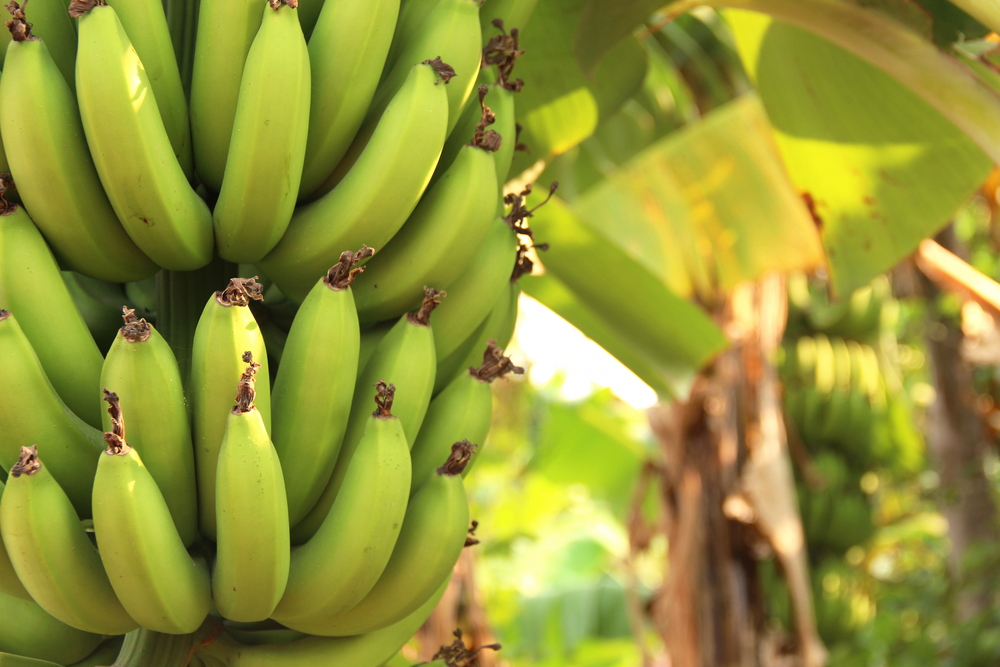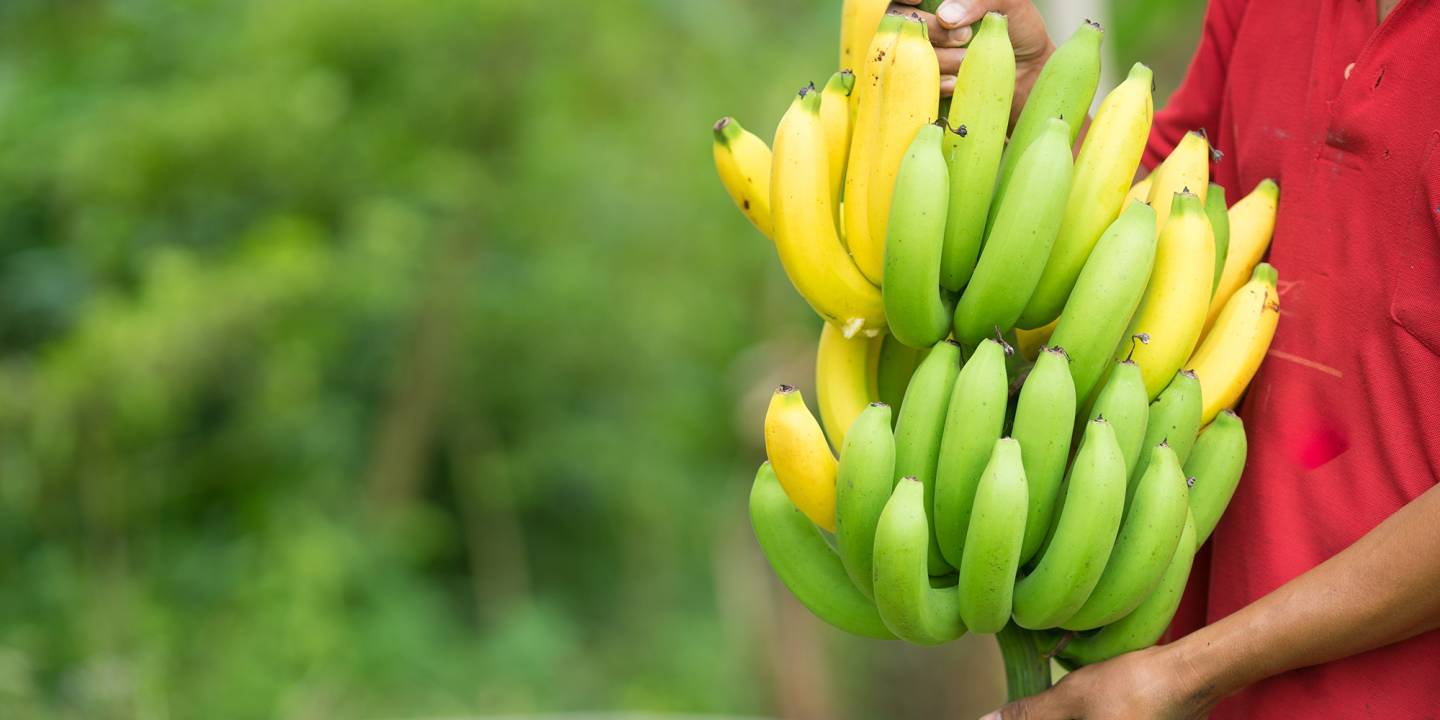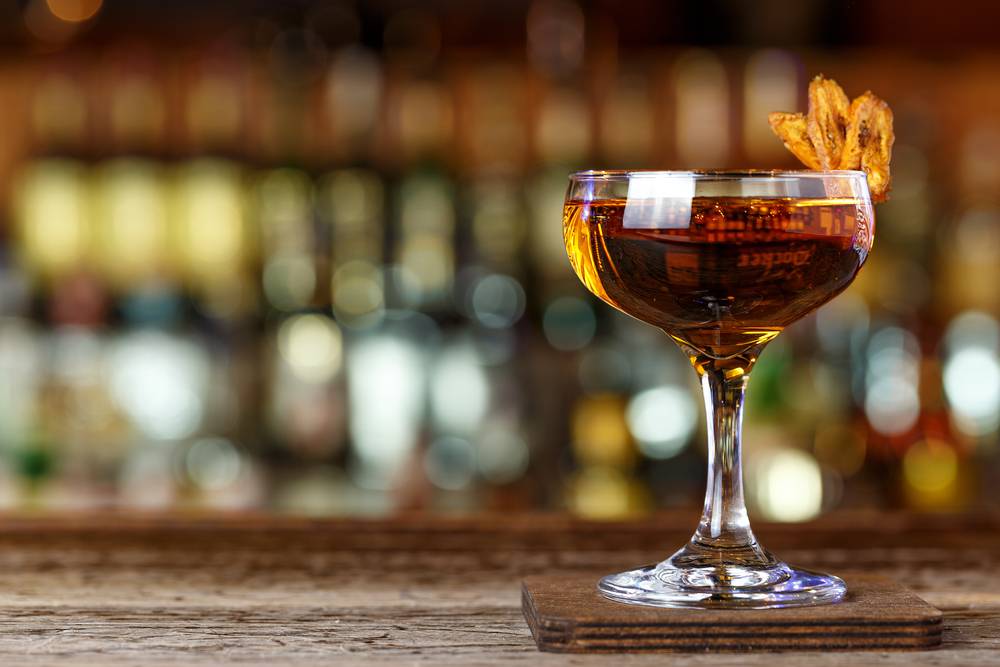Spoiler alert: Bananas don't grow on trees
Where do some of the bananas we use for our products grow?
Our 100% banana extracts are made from fruit predominantly sourced from Costa Rica, but also other countries where suppliers meet our sustainable sourcing commitments.
Banana plants need fertile soil and regular moisture, as well as good drainage but they don’t actually grow on trees - they grow on plants that are officially classified a herb, albeit the world’s largest herb.
What looks like the trunk of the banana “tree” is actually a roll of tightly packed leaves from an underground bulb.

Tell us more
Bananas have appeared in ancient Egyptian hieroglyphs and were probably the first cultivated fruit. The first banana farms were located in southeast Asia.
Costa Rican farmers began growing banana plants around 1878, and were the first Central American country to do so. Plantations in Costa Rica have designated more than 100,000 acres to its production, showing that the world is bananas about this wonderfully tasty and popular fruit.
The banana industry is vital to the Costa Rican community and accounts for approximately 100,000 jobs. As it plays such a critical role to their economy, the growers are becoming increasingly committed to embracing sustainable agriculture and making environmental conservation and fair labour practices a major part of their banana supply chain. This aligns with our commitment to working in partnership with our suppliers to meet our supply chain and sustainability commitments and deliver the best quality products and services to our customers.
What's the 'ap-peel' of bananas?
A healthy source of fibre, potassium, vitamin B6, vitamin C, and various antioxidants and phytonutrients, bananas boast a long list of possible health benefits from boosting digestion to improving heart health.
We have been making banana extracts for years and know exactly how to capture the best of their aroma as the bananas continue to ripen.
Our Banana Treattaromes® are the ideal ingredients for low and no alcohol beverages, dark spirits, beers, and dairy applications because of their caramel profiles. They can be effective at increasing sweetness perception for butterscotch, caramel, coffee, and dark chocolate flavours.
We also love the twist they can bring to spices like clove, star anise, and pimento.
Find out more about our capabilities in fruit and vegetables today.
Related:
The story of our watermelons
The story of our Cucumber Treattarome
Honey to the bee

